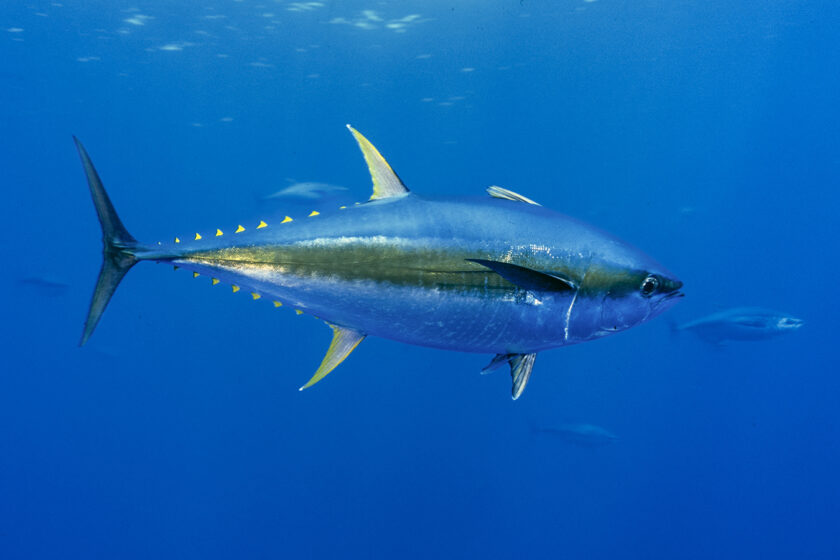You have mostly seen it on several restaurant menus. And like most, assumed the word Ahi means seared yellowfin tuna. Close, but no cigar.
Ahi is actually Hawaiian for fire. But where or how did the connection between this early Hawaiian word and the yellowfin tuna come about?
Taking a descriptive look at these open-ocean game fish, and the choice of this word will actually make sense.

Highly migratory, yellowfin tunas (Thunnus albacares) are among the most widespread species of tuna in the world. While absent from the Mediterranean Sea, they are found throughout the tropical and subtropical waters of the Atlantic/Caribbean, Gulf of Mexico, Pacific, Indian Ocean on up through the Red Sea.
By nature, they are fast movers, capable of outrunning most predators and prey. Only the fastest species of sharks, dolphins and billfish can catch them. To fishermen, they are strong, highly tenacious fighters. Even the most skilled rod and reel anglers with the best heavy tackle gear often have their hands full landing even the light weights in the 60-to-80-pound range. A really big yellowfin can weigh over 250, with the current IGFA all tackle record coming in at 388 pounds. That one was taken off Mexico in the Socorro Islands.

Before there were Penn Internationals and mono-filament fishing lines, early Hawaiian islanders fished from outrigger canoes with bone lures that had hooks, also carved from bone, tied to the end of braided hemp lines. To get the tuna’s attention, these island fishermen would paddle the wooden canoes as fast as they could, thereby trolling these lures on stout hand lines through feeding schools of big tuna. Some of these guys would lay into some really large fish – 100 to 200 pounds.
O.K. you have an angler doing a wind-sprint in a freak’en hollowed out log, hoping a fish takes the hook. Once one of these bluewater juggernauts realizes it has been had, its first course of action is to rocket into the depths, dragging yards of the thick hand line over the side at a blistering clip.
During these high-speed runs, the friction between the heavy cord and the contact point on the canoe’s wooden gunwale would become so intense the wood would begin to smoke, just like rapidly rubbing sticks together to start a campfire.
To prevent the line, and the canoe for that matter, from catching on fire a second fisherman continually douses the line with water. Most likely the most successful ahi fishermen in those days were the ones with the most burn marks on the gunwales of their outrigger canoes.

